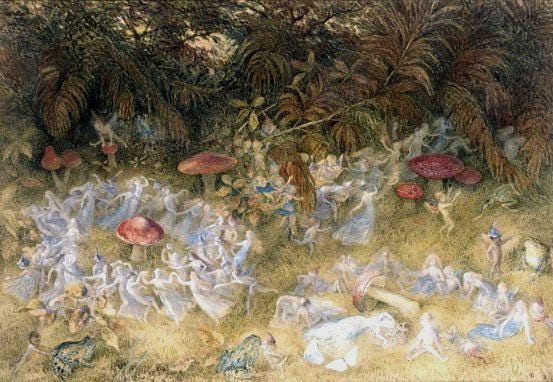Mr. Thistledown's Supplementary Guide to Garden Residences
(Being a Scholarly Documentation of Notable Domiciles and Their Peculiarities)
My Dear Reader,
In response to several thoroughly irregular inquiries about residential architecture in our Garden, I present this modest addendum to my previous guide. Please note that this list is by no means exhaustive, as new dwellings have been known to appear under thoroughly unprecedented circumstances.
Notable Residential Areas:
Foxglove Row Our most established residential district, centered around repurposed flowerpots and excellent southern exposure. Of particular note:
Number Twelve (my own modest residence), featuring a proper study with theoretical cartography storage
A sophisticated system of copper pipes serving as interconnected walkways
Communal tea gardens maintained by resident committees
Several highly irregular spatial anomalies that have been converted into quite comfortable spare rooms
Architectural Note: The row maintains strict standards regarding proper window box cultivation.
The Library Annex A collection of scholarly residences adjacent to the Library Teapot, primarily occupied by those engaged in academic pursuits:
Miss Hazel's quarters, which are under a particularly robust chamomile plant
The Archival Wing, where visiting scholars may find temporary accommodation
Several cozy nooks that seem to appear precisely when needed
A shared study space with excellent lighting for late-night research
Tea Service Note: Connected directly to the Library's refreshment facilities via an ingenious pneumatic delivery system.
The Burrow District A more traditional neighborhood featuring naturally excavated accommodations:
Grandmother Elderberry's extensively renovated family burrow, notable for its herb-drying apparatus
Mrs. Nutkin's residence with its experimental kitchen gardens
A complex network of connecting tunnels that occasionally rearrange themselves
Several thoroughly charming root cellars converted to seasonal storage
Climate Note: Maintains a remarkably consistent temperature, most suitable for proper tea storage.
The Wall Residences A more recent development following the establishment of the Shadow Museum:
Curator's quarters with specialized memory-preservation facilities
Guard accommodations featuring excellent views of both Garden and Wild
Converted storage spaces that have developed rather strong opinions about interior decoration
Several thoroughly irregular spaces that exist between one moment and the next
Architectural Note: One must remember to account for the Wall's tendency to adjust itself according to astronomical alignments.
Specialized Accommodations:
Master Oakenwise's Workshop-Residence A thoroughly unprecedented combination of living space and working area, featuring:
Several rooms that exist primarily in theoretical space
A tea preparation area specifically designed for gnomish brewing techniques
Windows that catch and hold different qualities of light
A thoroughly irregular number of corners (currently under scholarly investigation)
The Morning Glory Towers Seasonal accommodations favored by our more musically inclined residents:
Excellent acoustics for dawn rehearsals
Naturally orchestrated ventilation systems
Views specifically calibrated for inspiration
Several balconies that appear only during certain movements
A Note on Visiting: When calling upon Garden residents, one recommends:
Proper attention to traditional tea-bringing protocols
Awareness that doors may not always appear in the same place twice
Flexibility regarding the occasional spatial or temporal anomaly
Patience with rooms that sometimes rearrange themselves during conversations
Should any visitor find themselves in a residence that wasn't there the day before, please report such occurrences to the Library's Documentation Department for proper scholarly recording.
With Architectural Regards,
Cornelius Thistledown, Esq.
Chief Archivist of Improbable Events
Post Script: Our Garden has a thoroughly irregular habit of providing exactly the kind of residence one needs, precisely when needed. Such occurrences, while difficult to document properly, are generally best accepted with scholarly gratitude.



